Freshwater Molluscan Shells
Melanopsidae
The Melanopsidae have a strange disjunct
distribution, mostly around the Mediterranean.
Melanopsis is native
to Spain, Morocco, and the Middle East,
Esperiana is found in Central
Europe, but their closest relative,
Zemelanopsis, is
native to New Zealand and New Caledonia.
Faunus (placed in
the family Thiaridae by many authors, and
Potamididae by Brandt (1974)) ranges through
Southeast Asia, the East Indies, and Madagasgar.
According to Behrendt,
the Melanopsidae can feed on detritus or the algae
growing on hard surfaces, and many are willing to
consume either. Sexes are separarate, and adult
females have a small whitish reproductive opening on
the right side of the foot. Reproduction occurs
several times throughout the multi-year life of the
snail. Fertilization may occur by males releasing
sperm directly into the environment, as mating
behaviour has not been observed. Eggs are usually
layed in clutches on hard surfaces such as the
underside of stones, but may also be scattered on
soft substrates, and hatch into tiny snails without
going through a larval stage.
Northern Africa
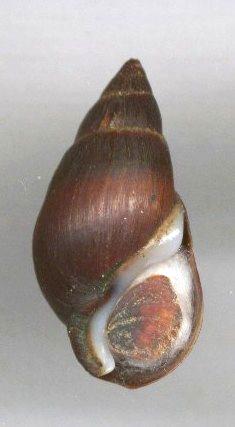 |
|
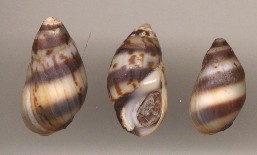
Melanopsis attenuata (Pallary, 1920),
Morocco, from two different sources. The
magnified specimen (left) shows no trace of
the
color banding seen in the specimens above. |
|
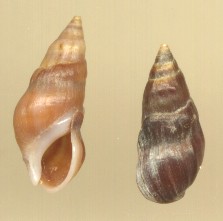
Melanopsis cesari Pallary, 1920.
Morocco. x3. |
 |
|
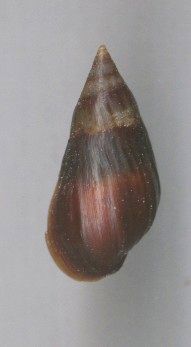 |
| Melanopsis buccinoidea
Olivier, Jordan River |
|
Melanopsis foleyi
(Pallary),
Morocco |
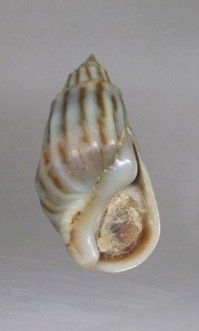
|
|
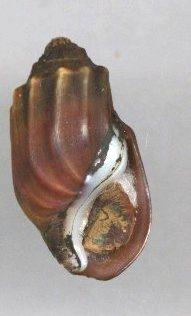
|
|
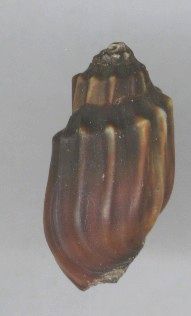
|
Melanopsis
magnifica Bourguignat,
with periostracum removed,
Morocco.
|
|
Melanopsis
magnifica ingens Pallary,
Morocco.
|
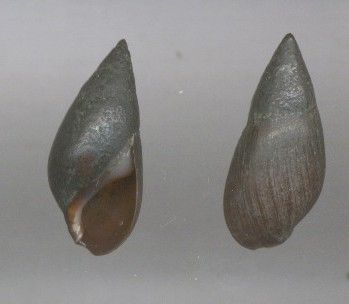
|
|
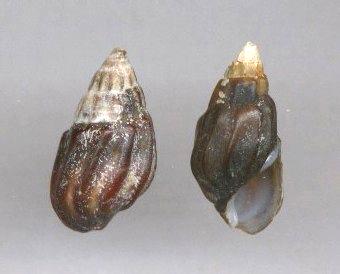
|
These specimens were obtained
from dealers identified as "Melanopsis
praemorsa (Linnaeus, 1758)", the left pair from Crete, Greece,
and the right from the Sea of Galilee. Van
Damme (1984) also includes within this named
species all of the forms from northern
Africa, some of which are shown above. This
may have been in response to the earlier
excesses of Jules Rene Bourguignat, "one
of the epigons of Victorian
species-makers," Van Damme expressed the
opinion that his species splitting, ignoring
natural variation, caused permanent damage to
African malacology. He goes on to mention
that Pallary was "a staunch devotee of
Bourguignat."
|
Europe
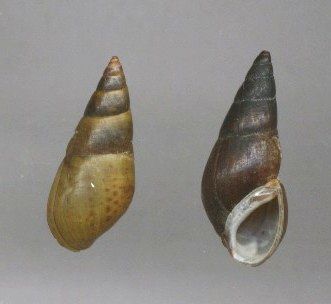 |
|
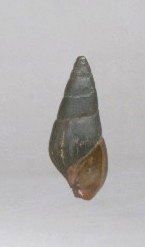 |
|
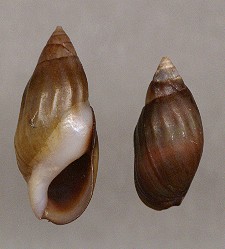 |
Esperiana esperi (A.
Ferrusac, 1823), Danube River,
Hungary. |
|
Esperiana
daudebartii
acicularis (Prevost 1821),
Romania |
|
Unknown Melanopsis sp
Hot spring in Zaragosa, Spain. |
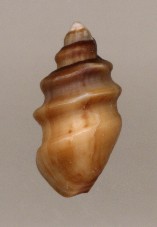 |
|
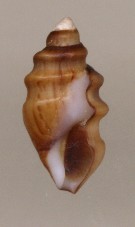 |
| Melanopsis bicarinata
Spain |
Indo-Pacific Faunus
species
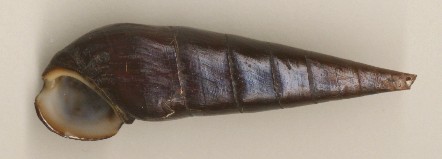 |
|
  |
Faunus ater (Born,
1778), native to Philippines,
Southeast Asia, and the East
Indies. Brandt (1974) includes Faunus with
the family Potamididae and indicates
that "It lives in fresh as well as slightly
brackish water near the coast in creeks,
small rivers and lagoons." |
|
unknown Faunus species,
Madagascar. |
New Zealand and Oceania
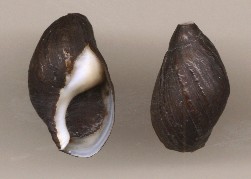 |
|
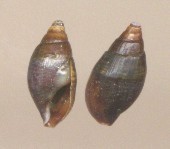 |
Zemelanopsis trifasciata Gray, 1843,
North Island of New Zealand,
streams. |
|
Melanopsis frustulum
Morelet, 1856. New Caledonia |
[Home
Page] [Site Map]
|